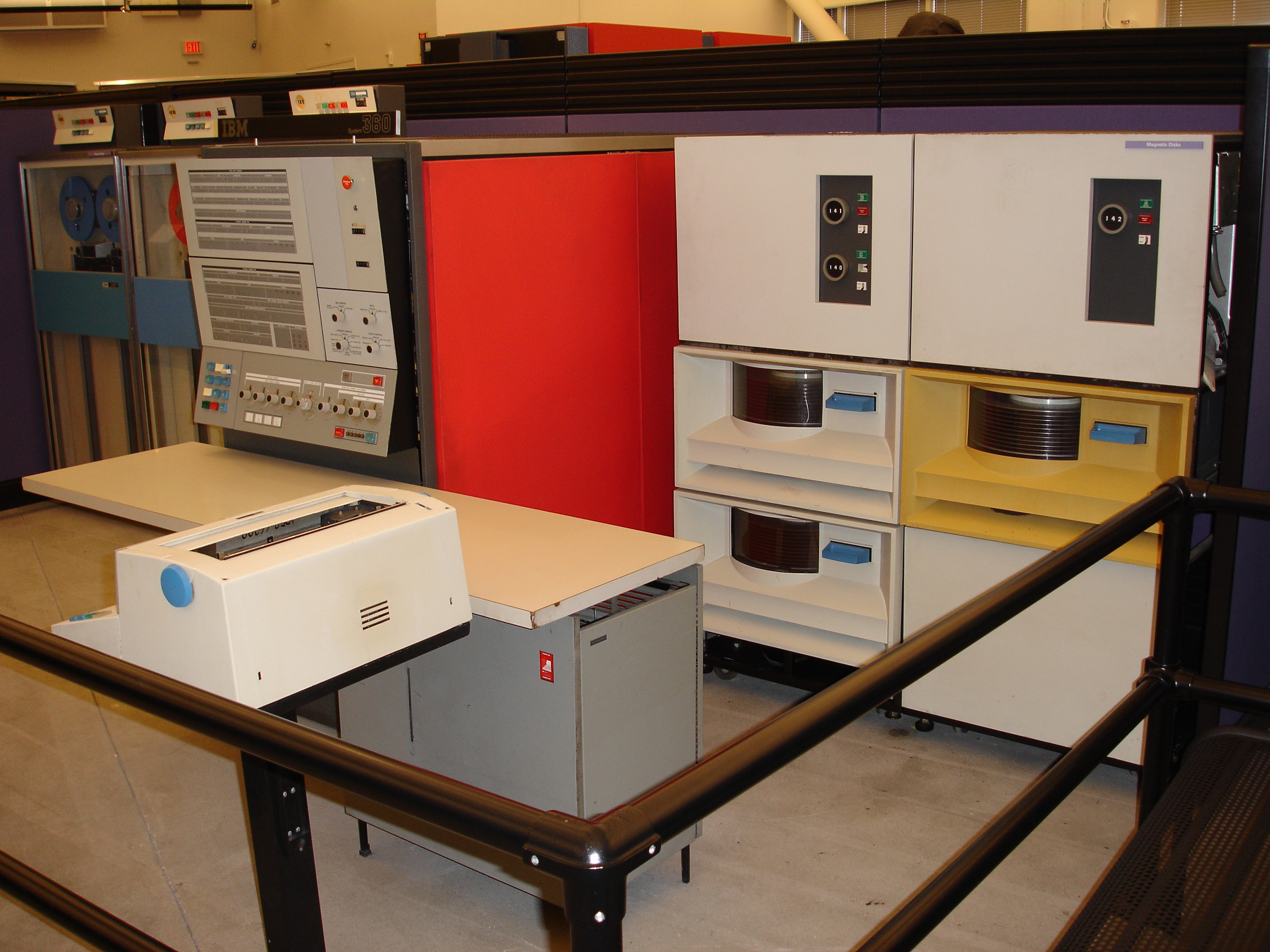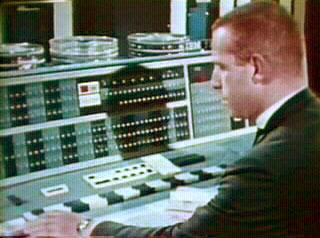|
IBM 8000
The IBM 8000 series was a proposed transistor-based successor to the IBM 7000 series. Important engineers on the project included Fred Brooks and Gerry Blaauw. The project plan for the 8000 series was presented by Fred Brooks in January 1961. Despite some technical successes, the project became a political football, amid IBM's search for a unified product line. The project was canceled in 1961 by Bob Evans, supplanted by the successful System/360 series. The 8000 project may have seen the first use of the term "architecture" in relation to computers. Problems Pugh cites a number of reasons for the cancellation of the 8000 line. * Because more integrated technology was not yet available the system was to have been built using ''discrete transistor'' (SMS) components. * The proposed systems would have been incompatible with IBM's existing successful 1400 series systems. * The proposed instruction set was too complex. * The systems offered inadequate floating point performance, ... [...More Info...] [...Related Items...] OR: [Wikipedia] [Google] [Baidu] |
IBM System/360
The IBM System/360 (S/360) is a family of mainframe computer systems announced by IBM on April 7, 1964, and delivered between 1965 and 1978. System/360 was the first family of computers designed to cover both commercial and scientific applications and a complete range of applications from small to large. The design distinguished between architecture and implementation, allowing IBM to release a suite of compatible designs at different prices. All but the only partially compatible Model 44 and the most expensive systems use microcode to implement the instruction set, featuring 8-bit byte addressing and fixed-point binary, fixed-point decimal and hexadecimal floating-point calculations. The System/360 family introduced IBM's Solid Logic Technology (SLT), which packed more transistors onto a circuit card, allowing more powerful but smaller computers. System/360's chief architect was Gene Amdahl, and the project was managed by Fred Brooks, responsible to Chairman Thomas J. Wat ... [...More Info...] [...Related Items...] OR: [Wikipedia] [Google] [Baidu] |
IBM 1400 Series
The IBM 1400 series are second-generation (transistor) mid-range business decimal computers that IBM marketed in the early 1960s. The computers were offered to replace tabulating machines like the IBM 407. The 1400-series machines stored information in magnetic cores as variable-length character strings separated on the left by a special bit, called a "wordmark," and on the right by a "record mark." Arithmetic was performed digit-by-digit. Input and output support included punched card, magnetic tape, and high-speed line printers. Disk storage Disc or disk may refer to: * Disk (mathematics) In geometry, a disk (Spelling of disc, also spelled disc) is the region in a plane (geometry), plane bounded by a circle. A disk is said to be ''closed'' if it contains the circle that constitut ... was also available. Many members of the series could be used as independent systems, as extensions to IBM punched-card equipment, or as auxiliary equipment to other computer systems. S ... [...More Info...] [...Related Items...] OR: [Wikipedia] [Google] [Baidu] |
MIT Press
The MIT Press is the university press of the Massachusetts Institute of Technology (MIT), a private research university in Cambridge, Massachusetts. The MIT Press publishes a number of academic journals and has been a pioneer in the Open Access movement in academic publishing. History MIT Press traces its origins back to 1926 when MIT published a lecture series entitled ''Problems of Atomic Dynamics'' given by the visiting German physicist and later Nobel Prize winner, Max Born. In 1932, MIT's publishing operations were first formally instituted by the creation of an imprint called Technology Press. This imprint was founded by James R. Killian, Jr., at the time editor of MIT's alumni magazine and later to become MIT president. Technology Press published eight titles independently, then in 1937 entered into an arrangement with John Wiley & Sons in which Wiley took over marketing and editorial responsibilities. In 1961, the centennial of MIT's founding charter, the ... [...More Info...] [...Related Items...] OR: [Wikipedia] [Google] [Baidu] |
IBM 7090
The IBM 7090 is a second-generation Transistor computer, transistorized version of the earlier IBM 709 vacuum tube mainframe computer that was designed for "large-scale scientific and technological applications". The 7090 is the fourth member of the IBM 700/7000 series#Scientific Architecture, IBM 700/7000 series scientific computers. The first 7090 installation was in December 1959. In 1960, a typical system sold for $2.9 million (equivalent to $ million in ) or could be rented for $63,500 a month (). The 7090 uses a 36-bit word length, with an address space of 32,768 words (15-bit addresses). It operates with a basic memory cycle of 2.18 μs, using the IBM 7302 Core Storage Magnetic-core memory, core memory technology from the IBM 7030 (Stretch) project. With a processing speed of around 100 FLOPS, Kflop/s, the 7090 is six times faster than the 709, and could be rented for half the price. An upgraded version, the 7094, was up to twice as fast. Both the 7090 and the 7094 ... [...More Info...] [...Related Items...] OR: [Wikipedia] [Google] [Baidu] |
Index Register
An index register in a computer's central processing unit, CPU is a processor register (or an assigned memory location) used for pointing to operand addresses during the run of a program. It is useful for stepping through String (computer science), strings and Array data structure, arrays. It can also be used for holding loop iterations and counters. In some Instruction set architecture, architectures it is used for read/writing blocks of memory. Depending on the architecture it may be a dedicated index register or a general-purpose register. Some instruction sets allow more than one index register to be used; in that case additional instruction fields may specify which index registers to use. Generally, the contents of an index register is added to (in some cases subtracted from) an ''immediate'' address (that can be part of the instruction itself or held in another register) to form the "effective" address of the actual data (operand). Special instructions are typically provided ... [...More Info...] [...Related Items...] OR: [Wikipedia] [Google] [Baidu] |
Front End Processor
A front-end processor (FEP), or a communications processor, is a small-sized computer which interfaces to the host computer, a number of networks, such as SNA, or a number of peripheral devices, such as terminals, disk units, printers and tape units. Data is transferred between the host computer and the front-end processor using a high-speed parallel interface. The front-end processor communicates with peripheral devices using slower serial interfaces, usually also through communication networks. The purpose is to off-load from the host computer the work of managing the peripheral devices, transmitting and receiving messages, packet assembly and disassembly, error detection, and error correction. Two examples are the IBM 3705 Communications Controller and the Burroughs Data Communications Processor. Sometimes FEP is synonymous with a communications controller, although the latter is not necessarily as flexible. Early communications controllers such as the IBM 270x ser ... [...More Info...] [...Related Items...] OR: [Wikipedia] [Google] [Baidu] |
Memory Segmentation
Memory segmentation is an operating system memory management technique of dividing a computer's primary memory into segments or sections. In a computer system using segmentation, a reference to a memory location includes a value that identifies a segment and an offset (memory location) within that segment. Segments or sections are also used in object files of compiled programs when they are linked together into a program image and when the image is loaded into memory. Segments usually correspond to natural divisions of a program such as individual routines or data tables so segmentation is generally more visible to the programmer than paging alone. Segments may be created for program modules, or for classes of memory usage such as code segments and data segments. Certain segments may be shared between programs. Segmentation was originally invented as a method by which system software could isolate software processes ( tasks) and data they are using. It was intended to in ... [...More Info...] [...Related Items...] OR: [Wikipedia] [Google] [Baidu] |
Magnetic-core Memory
In computing, magnetic-core memory is a form of random-access memory. It predominated for roughly 20 years between 1955 and 1975, and is often just called core memory, or, informally, core. Core memory uses toroids (rings) of a hard magnetic material (usually a Ferrite (magnet)#Semi-hard ferrites, semi-hard ferrite). Each core stores one bit of information. Two or more wires pass through each core, forming an X-Y array of cores. When an electrical current above a certain threshold is applied to the wires, the core will become magnetized. The core to be assigned a value – or ''written'' – is selected by powering one X and one Y wire to half of the required current, such that only the single core at the intersection is written. Depending on the direction of the currents, the core will pick up a clockwise or counterclockwise magnetic field, storing a 1 or 0. This writing process also causes electricity to be electromagnetic induction, induced into nearby wires. If t ... [...More Info...] [...Related Items...] OR: [Wikipedia] [Google] [Baidu] |
Floating-point Unit
A floating-point unit (FPU), numeric processing unit (NPU), colloquially math coprocessor, is a part of a computer system specially designed to carry out operations on floating-point numbers. Typical operations are addition, subtraction, multiplication, division, and square root. Modern designs generally include a fused multiply-add instruction, which was found to be very common in real-world code. Some FPUs can also perform various transcendental functions such as exponential or trigonometric calculations, but the accuracy can be low, so some systems prefer to compute these functions in software. Floating-point operations were originally handled in software in early computers. Over time, manufacturers began to provide standardized floating-point libraries as part of their software collections. Some machines, those dedicated to scientific processing, would include specialized hardware to perform some of these tasks with much greater speed. The introduction of microcode in ... [...More Info...] [...Related Items...] OR: [Wikipedia] [Google] [Baidu] |
Instruction Set
In computer science, an instruction set architecture (ISA) is an abstract model that generally defines how software controls the CPU in a computer or a family of computers. A device or program that executes instructions described by that ISA, such as a central processing unit (CPU), is called an ''implementation'' of that ISA. In general, an ISA defines the supported Machine code, instructions, data types, Register (computer), registers, the hardware support for managing Computer memory, main memory, fundamental features (such as the memory consistency, addressing modes, virtual memory), and the input/output model of implementations of the ISA. An ISA specifies the behavior of machine code running on implementations of that ISA in a fashion that does not depend on the characteristics of that implementation, providing binary compatibility between implementations. This enables multiple implementations of an ISA that differ in characteristics such as Computer performance, performa ... [...More Info...] [...Related Items...] OR: [Wikipedia] [Google] [Baidu] |
IBM 1400
The IBM 1400 series are second-generation (transistor) mid-range business decimal computers that IBM marketed in the early 1960s. The computers were offered to replace tabulating machines like the IBM 407. The 1400-series machines stored information in magnetic cores as variable-length character strings separated on the left by a special bit, called a "wordmark," and on the right by a "record mark." Arithmetic was performed digit-by-digit. Input and output support included punched card, magnetic tape, and high-speed line printers. Disk storage was also available. Many members of the series could be used as independent systems, as extensions to IBM punched-card equipment, or as auxiliary equipment to other computer systems. Some, however, were intended for specific applications or were economical only as independent systems. History The 1401, announced on October 5, 1959, is the first member of the IBM 1400 series. It was the first computer to deploy over 10,000 units. The ... [...More Info...] [...Related Items...] OR: [Wikipedia] [Google] [Baidu] |




